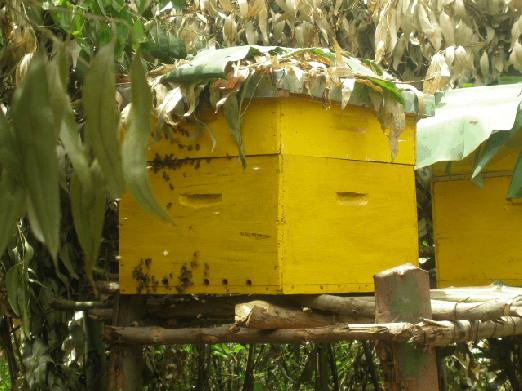A study by the African Insect Science for Food and Health in 2017 established that crop pollination by bees’ increases farm yields by 70 per cent.
While other pollinators tend to be selective, honey bees are found to be generally cross-cutting.
Most small scale farmers in East Africa have limited understanding of the economic benefits of bee pollination in crop productivity. According to Muo Kasina, a research officer at the Kenya Agricultural Research and Livestock Organization (KALRO), bees are the main pollinators in agriculture, but continued provision of their pollination service is threatened due to worldwide declines in the populations of bees and other pollinators as well as continued influence by human activities.
Related
Beekeeping project entice farmers with quick money
Climate change driving African bee to extinction
A global study has reported a 40 per cent drop, in the last decade, in the population of the insects that pollinate two-thirds of the world's food production crops, raising an additional specter in achieving food security, at a time when global food prices are rising on poor yields also caused by climate change.
Honey bees are not the only bee species that are significant for human wellbeing. Pachyanthidium bees are insects just like honey bees but they do not make honey. They are native bees, important as wild plant pollinators and possibly as pollinators of crops. They live independently of others.
Bees build their nests in sheltered locations in pre-existing natural cavities such as burrows, crevices and hollow twigs that can be found in less disturbed and dry habitats.
Most bees in East Africa are pollen-collecting bees. In East Africa, they mainly visit wild flowering plants as well as domesticated plant flowers. Their importance as effective pollinators in agriculture has yet to be established.
However, they may be effective pollinators of wild plant species; hence the need to protect them by protecting their habitat. Just like other Megachilids, Pachyanthidium bees have not been domesticated in East Africa. However, this may be possible with supportive research.
Pachyanthidium bees are found in most Regions of Kenya, Tanzania and Uganda. Theoretically, bee conservation and management is inexpensive and adopted activities can also improve the aesthetic value of the landscape.
Such practices involve setting land aside (e.g. a one metre strip) in the farmland to host all year round food resources (i. e flowering plants) for the bees, as well as safer sites for nesting, mating, resting and hiding from natural enemies. During flowering, farmers should manage pesticide usage carefully to avoid poisoning flower-visiting bees. Farmers should also minimize pesticide drift from the field to adjacent areas.
Write comment (0 Comments)




 Geoffrey Rono in his tomato greenhouse near Mara River in Narok county. Keeping records on his farming expenses and income has helped him trace well his loses and profits foe the past four years. Photo: Zablon Oyugi.
Geoffrey Rono in his tomato greenhouse near Mara River in Narok county. Keeping records on his farming expenses and income has helped him trace well his loses and profits foe the past four years. Photo: Zablon Oyugi.











